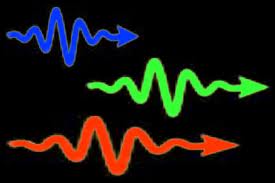n
n
n
n
n
n
nOnnthis date in 1856, English physicist Joseph J. Thomson was born. Henended up discovering the electron.
n
n
n
n
nAndnon this date in 1926, American physicist Gilbert N. Lewis coined thenword photon for a “particle” or bundle of light energy.
n
n
n
n
n
nElectronsnand photons are called elementary particles because (at least as farnas we know) they are not made up of smaller particles. Really, reallyntiny things like cells are made of scads of tinier units callednmolecules, which are in turn made up of atoms. A human body is madenup of trillions of cells, and each one of those cells is made up ofnquadrillions of atoms. But atoms are made of even smaller particles:nprotons, neutrons, and electrons. Protons and neutrons are made up ofnquarks held together by strong forces called gluons.
n
nElectronsnand photons are called elementary particles because (at least as farnas we know) they are not made up of smaller particles. Really, reallyntiny things like cells are made of scads of tinier units callednmolecules, which are in turn made up of atoms. A human body is madenup of trillions of cells, and each one of those cells is made up ofnquadrillions of atoms. But atoms are made of even smaller particles:nprotons, neutrons, and electrons. Protons and neutrons are made up ofnquarks held together by strong forces called gluons.
n
n
n
nQuarksnand electrons seem to be fundamental particles—not made up ofnsmaller parts. The forces, including gluons and photons, seem to benfundamental as well.
n
n
n
n
n
n Learnnmore about particle physics at The Particle Adventure.n It really isn’t so VERY difficult to understand what stuff is madenof, although we do have quite a few named items in the list ofnfundamentals: 16, to be exact. The great scientist Enrico Fermi oncensaid, “Young man, if I couldnremember the names of these particles, I would have been a botanist!”
Learnnmore about particle physics at The Particle Adventure.n It really isn’t so VERY difficult to understand what stuff is madenof, although we do have quite a few named items in the list ofnfundamentals: 16, to be exact. The great scientist Enrico Fermi oncensaid, “Young man, if I couldnremember the names of these particles, I would have been a botanist!”
 Learnnmore about particle physics at The Particle Adventure.n It really isn’t so VERY difficult to understand what stuff is madenof, although we do have quite a few named items in the list ofnfundamentals: 16, to be exact. The great scientist Enrico Fermi oncensaid, “Young man, if I couldnremember the names of these particles, I would have been a botanist!”
Learnnmore about particle physics at The Particle Adventure.n It really isn’t so VERY difficult to understand what stuff is madenof, although we do have quite a few named items in the list ofnfundamentals: 16, to be exact. The great scientist Enrico Fermi oncensaid, “Young man, if I couldnremember the names of these particles, I would have been a botanist!”n
n
n
nAnotherneasy-to-understand website is Etacude.
n
n
n
n
n
nAlsonon this date…
n
n
n
n
n
n
n
n




